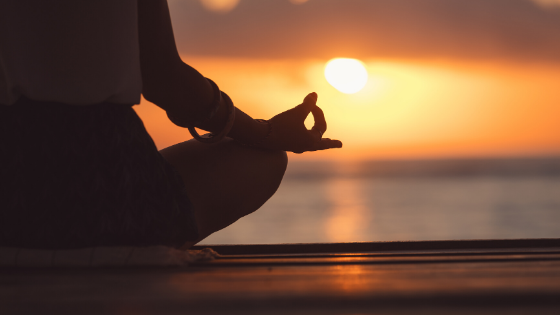
Ok, What Is Yoga, Exactly?

By this point, pretty much everyone has heard about yoga. You probably even know a little bit about it without even realizing it. You likely know that it’s commonly used as a form of exercise, that it involves positioning your body in specific poses, and that many practitioners find it relaxing. And you certainly know that doing yoga gives you an excuse to wear some of the comfiest pants you own.

But now you’re curious—curious what it is, curious what the benefits are, curious if it’s something you should be doing.
So let’s take a closer look at yoga: what it is, where it came from, and how people are using it to benefit their lives.
More Than Meditation
First and foremost, you need to know that yoga didn’t start out as a fitness practice. While there have been physical elements to yoga pretty much from the beginning, that wasn’t the original focus.
 Hi
Historically, the word “yoga” was a term used to describe a collection of philosophies. These philosophies were rather comprehensive, and they were used to pursue both personal betterment and personal enlightenment. They included codes of conduct, levels of discipline, and ideologies that were supposed to be applied to daily life. The original Sanskrit word yoga translates as “yoke” and or “union” which contextually refers to yoga as a means of uniting (yoking) mind, body, and spirit. (Citation: https://en.wikipedia.org/wiki/Yoga#Etymology )
In this context, the asanas—the postures and movements yoga has become known for—and pranayama—the breathing exercises used to control respiration and heart rate—were meditative aids designed to help practitioners reach deeper levels of meditation. They were an important part of yoga, yes, but they were only one part.
A Western Appeal
Where that started to change was when gurus began sharing yoga with the west. See, whether we’re religiously inclined or not, those of us who grew up in “the west” were raised in cultures saturated with Christian and Judaic philosophies. As a result, eastern philosophies have a hard time penetrating culturally, and typically lack the broader appeal they have back in their cultures of origin.
Yoga started in the same position, appealing to intellectuals but not to the broader public. That was until gurus started sharing the more physical aspects of yoga. Once it was demonstrated that yoga had applications as a form of exercise, people started getting interested.
To further facilitate this interest, gurus started incorporating principles from western athletics. The number of asanas in the yoga playbook increased dramatically, and whole disciplines were established that focused primarily on using these asanas for personal fitness.
Methods and Disciplines
Which brings us to the part most people get confused about: the different disciplines. One of the reasons yoga has continued to engage the western public is because it can be practiced in so many different ways.
Disciplines differ in how they apply the principles of yoga to exercise, and practices even vary teacher to teacher. That said, yoga disciplines tend to fall into a few categories.
There’s yoga that focuses on holding individual poses for extended periods. Disciplines in this category, such as Iyengar and Hatha, are more accessible to beginners and promote flexibility and relaxation.
 Then there’s yoga that focuses on transitioning from pose to pose, both smoothly and quickly. Disciplines in this category, like Vinyasa and Ashtanga, tend to be more aerobic, and as such promote cardiovascular health, endurance, and potentially some level of weight loss.
Then there’s yoga that focuses on transitioning from pose to pose, both smoothly and quickly. Disciplines in this category, like Vinyasa and Ashtanga, tend to be more aerobic, and as such promote cardiovascular health, endurance, and potentially some level of weight loss.
Finally, there’s yoga that leverages exercise to teach and promote more spiritual aspects. These disciplines, including Kripalu and Integral, take one of the two previous physical styles and use it as a gateway to yoga’s core beliefs and teachings. Classes frequently include practices like chanting, positive affirmations, meditation. The goal of these disciplines is to promote emotional healing, enlightenment, and overall improvement of quality of life.
Here’s the bottom line: yoga isn’t CrossFit. It isn’t running a 5k. It’s not just a fitness regimen. It’s not a pair of tennis shoes you put on when it’s time to work out and take off when you’re done. At least, that’s not what it’s intended to be. Yoga was developed as an effort to help people be their best selves—physically, mentally, and spiritually.
And if you’re willing to put in the effort, that’s what it can be for you, too.
































